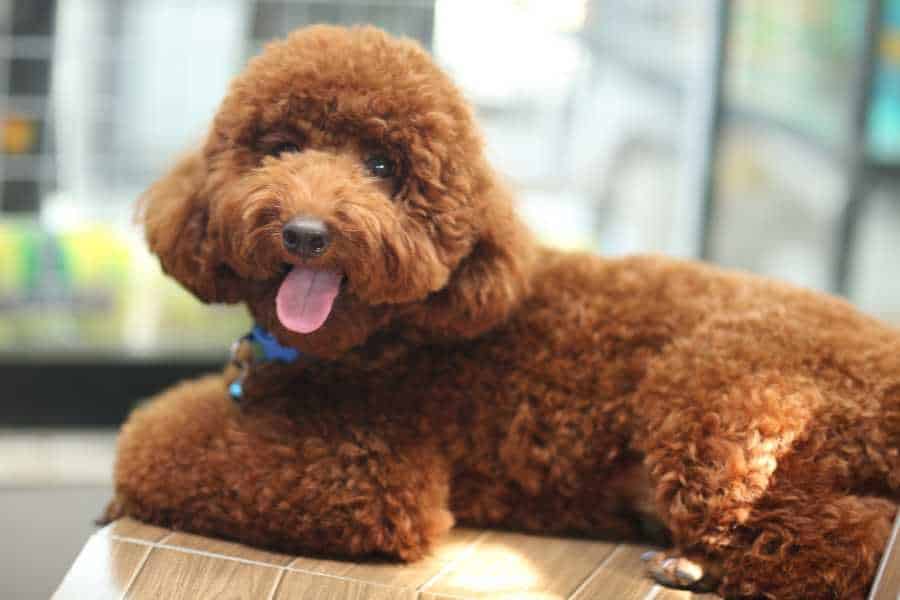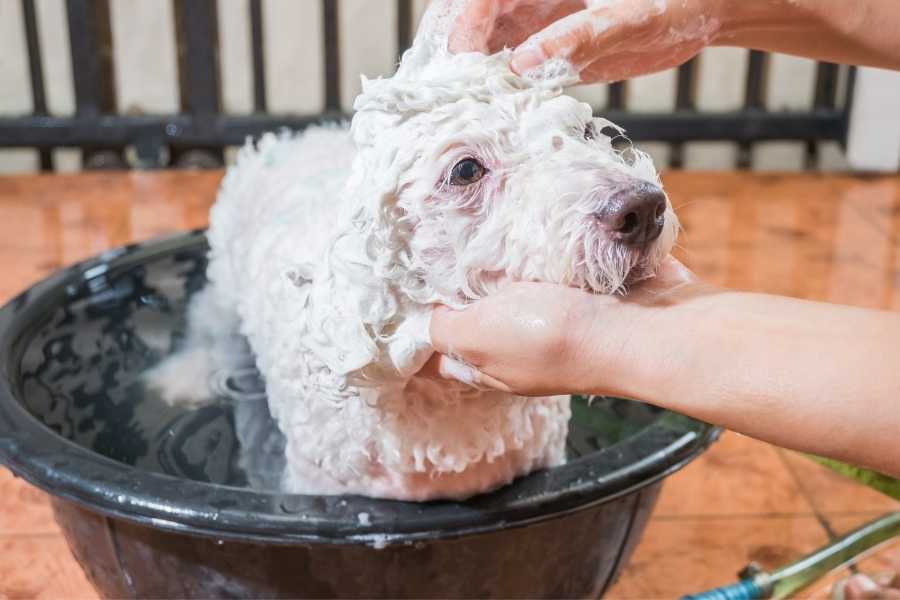Are you looking for a loyal and loving companion? You may have heard about poodles, but are they the right choice for your family?
In this blog, we’ll explore all the incredible benefits of owning a poodle and answer the question: Is the Poodle hypoallergenic breed? Get ready to discover why you should consider owning a poodle in your home!
Introduction to poodles as a breed and their popularity as pets
Poodles are a popular dog breed, and their popularity has only been on the rise in recent years. With their intelligence, friendly personality, and hypoallergenic coat, poodles are often found in households worldwide. Poodles come in three sizes – toy, miniature, and standard Poodle; and in various colors such as white, black, blue, gray, brown, and apricot.
Those who choose to bring a poodle home will find themselves with an eager pupil ready to learn anything it’s taught. Poodles love physical activities and can enjoy swimming in their free time.
There are several benefits to owning a poodle. They are intelligent dogs, so they can easily be trained when socialized correctly. This is why they have also become popular service dogs and therapy animals, providing comfort for those who need it most.
Another great benefit is that poodles are hypoallergenic, which is excellent news for those who may be allergic or particularly sensitive to pet dander. Poodle grooming requires more frequent maintenance than other breeds because of its curly fur, which contributes to why this breed remains one of the most popular today and continues to increase its large fan base worldwide.
Definition of hypoallergenic dogs and how they can benefit allergy sufferers
The term “hypoallergenic” applies to dogs and other animals that are less likely to cause allergic reactions in people who are sensitive to everyday dog allergens. For example, the Poodle is hypoallergenic because its coat produces a minimal amount of pet dander, one of the humans’ primary causes of allergies. The Poodle may further benefit allergy sufferers because it does not shed hair and dander like some other breeds.
The definition and characteristics of hypoallergenic dogs will vary from person to person, as different substances may trigger allergies. Commonly, hypoallergenic dogs refer to breeds with a low-shedding coat, such as the Poodle, Bichon Frise, or Cockapoo; those with shorter hairs, like Labradors or Schnauzers, or those with a combination of the two, such as Portie’s or Whidentails.
In addition, some owners opt for non-shedding breeds like Portuguese Water Dogs, Giant Schnauzers, or any of the so-called Hairless Breeds such as Chinese Cresteds or Xoloitzcuintles.
It is important to remember it remains impossible to guarantee an allergen-free environment – even if you get a hypoallergenic pup – since there will likely be some level of pet dander present in your home even if you get a hypoallergenic puppy, your chosen breed won’t trigger allergies too severely.
However, owning a hypoallergenic breed means fewer allergy symptoms than other breeds with higher instances of causing allergies. People who suffer from severe allergies may find ownership of a poodle has enormous benefits over different types of dogs that can cause more intense allergic reactions compared to relatively mild symptoms provoked by owning a poodle instead.

Overview of the different types of poodle breeds and their characteristics
The Poodle is one of the most popular dog breeds in the world due to its low shedding and hypoallergenic coat. But beyond these facts, there is much more to learn about this intelligent, loyal, versatile canine companion.
The three main poodle breeds are Standard, Miniature, and Toy. The Standard Poodle stands 15 to 24 inches tall with a square body shape; its eager expression and beautiful coat make it an iconic breed worldwide. The Miniature Poodle stands approximately 11-15 inches at full maturity and often has a rounder face than the Standard Poodle.
Similarly, Toy Poodles typically stand 10 inches or less with a rounder face and fluffier coats that come in a wide range of colors from white to red or even blueish-gray.
All three varieties share many of the same qualities, including their happy outlooks, quick intelligence, and willingness to please, which makes them ideal for most people as companionship dogs. These poodle breeds don’t have set personalities; instead, they have inherited behaviors caused by breeding and past experiences that combine with their characteristics to form their specific personality traits – they are highly loyal but don’t forget they still have a sense of self too!
Poodles also benefit from being attentive learners who can even pick up some tricks after just one goes at them! They require regular exercise and interaction that allows them time away from permanent confinement areas such as crates or kennels; this will help reduce risky behavior problems like digging or barking excessively due to boredom.
All poodles need regular brushing, bathing, and occasional clipping or professional grooming. However, if you are willing to invest in these things, you’ll be rewarded with an even more affectionate pet bond between you both!
Discussion of the origins of poodles and how their hypoallergenic traits may have developed
The Poodle is a breed with a long and diverse history. Since the 16th century, this breed has been trained for hunting and water retrieval, which has played an essential role in their physical characteristics and innate limitations.
In recent years, many people have begun to recognize the Poodle for its hypoallergenic coat and related benefits for those suffering from allergies or other sensitivities. This raises the question of how such a characteristic may have developed over time as part of this highly sought-after breed.
One theory is that individuals living in wet climates began to breed these dogs centuries ago to create coats that would insulate them from the elements when they were out hunting or retrieving game from the water sources they frequented. This could account for why some poodles, particularly Miniature Poodles, still retain curly coats today: as it allows them better protection against icy temperatures or precipitation encountered during swims and dives in low temperatures.
Additionally, intermingling with other breeds, such as German Shepherds, may also be responsible for influencing their innate hypoallergenic status. It is known that German Shepherd fur tends to be less irritating than some other coat types, so blending such an element into the gene pool might explain how this trait may have been passed down into modern-day varieties of Poodle.
This explains why some breeds display a mix of wavy and curly coats – they are hybrids between two distinct types originally bred under quite different environmental conditions but over time left behind a common characteristic still seen in today’s Poodle mixes – a hypoallergenic coat!
Furthermore, due to their popularity over time now as pets require special care through regular haircuts, which can help reduce any chance of allergic reactions developing between them as pets and their handlers alike. This once again speaks to how adaptive this breed has become throughout centuries of ownership by adopting new modifications based on human needs rather than solely its traditional hunting roots, making it one of today’s most well-rounded breeds!

Explanation of the scientific basis for why poodles may be less likely to trigger allergies
Scientific study has backed up the long-held belief that poodles are hypoallergenic. As a prevalent breed of dog, there have been many situations where poodles have not triggered allergies, but other breeds have. Poodles may produce fewer reactive substances than other breeds in the same family.
The hypothesis is that poodles are less likely to produce animal allergens that trigger allergic reactions because of their thick, curly coats than breeds with straight fur textures. The argument is based on the idea that the density and characteristics of the hair help trap allergens and protect those who suffer from allergies from having to be exposed to them. The tight coat prevents allergens from getting free into the air as most dander particles get stuck in the curls and can easily be wiped away when you regularly brush your dog.
The scientific premise behind this phenomenon is called allergen encapsulation. It references how some animal fur can build a nest-like structure around certain allergenic particles, trapping them inside its fibers and not releasing them in the air as much as breeds with straighter hairdos. This has increased in popularity among those who enjoy having pets but suffer from various types of allergies, whether respiratory, contact, or even food-related.
Poodle owners have renowned their pets for their hypoallergenic properties for many years. Thanks to study advancements, science has proven why this breed might be more allergy-friendly than others regarding canine companionship.
Comparison of poodles to other hypoallergenic breeds and their relative allergy-friendliness
The hypoallergenic qualities of poodles make them stand out among other breeds in helping those with allergies. They are also a highly loyal, intelligent, and people-loving companion. When considering a hypoallergenic dog, it is essential to compare the varying levels of hypoallergenic ness between breeds.
Poodles are extremely low shedding, non-shedding, or shed very little, making them one of the most popular breeds for people suffering from allergies. This is because their fur does not release dander into the air like other breeds allowing for a low-allergy environment in the home. Poodle coats also produce less dander, adding to their allergy-friendly status.
In comparison, other hypoallergenic dog breeds such as Bichon Frise, Maltese, and Shih Tzu are also low shedders and possess a single coat layer which emits substantially fewer allergens into the air than most dogs that have double coats.
This means that no matter what breed you choose, there will still be some potential for allergic reactions as all animals possess proteins in their skin cells and saliva that can act as allergens in sensitive people — but some suffer less than others, so if you want a lower allergen level then poodles or one of these other single-layered coated dogs will give you more likelihood of living allergen-free.
Regarding pet ownership for those with allergies, there is no perfect answer, but taking steps like brushing your pet regularly and regularly washing bedding can help reduce exposure and consider one of these low-shedding breeds, such as the Poodle or an equivalent breed mentioned above. Doing this can help lessen allergic reactions around your home while still providing your family with a loving companion.

Tips for selecting a hypoallergenic poodle, including considerations for coat type and grooming
Poodles are widely considered to be one of the most hypoallergenic breeds. With their signature look and cheerful disposition, poodles make great pets for people with allergies or asthma. But when choosing a poodle, there are some factors that you should consider to make sure that you find the right match for your household.
When selecting a hypoallergenic poodle, start by deciding which type of coat you’d prefer. Poodles come in three coat varieties: curly, corded, and straight hair. Curly-haired poodles have thick fur that doesn’t shed quickly and requires frequent grooming; they also require daily brushing to keep the hair neat.
Corded poodles have long fuzzy cords and need occasional haircuts to keep the threads tidy; however, these coats do not shed much, making them suitable for those with allergies or asthma. Lastly, straight-haired poodles rarely shed and only need occasional brushing; the hair is naturally smooth and glossy.
The second tip for selecting a hypoallergenic poodle is to consider grooming needs. All three types of coats require regular brushing once or twice per week to keep them clean and condition any mats or tangles that may form due to lack of care or heat exposure (if living outdoors).
Corded coats will also require routine haircuts every six months, as mentioned above—these should be done by an experienced groomer who understands how to cut them properly—while both curly and straight coats may need occasional trims if they become too long or need some shaping up around the legs, tail and face area. In general, though, all styles do not require extensive professional trimming very often unless desired for styling purposes (i.e., show cuts).
Finally, look into which activity level suits your lifestyle best when selecting a hypoallergenic Poodle, as these dogs can range from low-level couch potatoes up to very athletic water dogs depending on what type you choose (e.g., Standard Poodle vs. Toy/Miniature).
Most Poodle owners tend to pick a pup based on their activity level requirements—you want something energetic enough to last a long jog but laid back enough that he won’t get overly excited during your morning walk around the block—but it’s important to note that regardless of size/color/coat there will be individual temperament differences within each litter, so it never hurts explore before adopting!
Advice for caring for a poodle with allergies, including feeding and grooming recommendations
Many people are attracted to owning a Poodle for its hypoallergenic coat, but some may need unique advice for caring for a poodle with allergies. While all breeds require regular grooming, care should be taken when brushing, combing, and trimming a Poodle to reduce exposure to allergens that could trigger an allergic reaction.
When it comes to feeding, those with allergies should opt for an allergy-friendly diet such as grain-free kibble or wet food. This will help avoid exposure to grains and other potential allergens that could trigger an allergic reaction, as alternative proteins (duck, turkey, etc.) can provide nutritious sources of nutrition while avoiding known allergens.
Finally, regular grooming is essential to keep the Poodle looking healthy and clean without spreading other environmental allergens into your home. This includes:
- You are bathing your Poodle every two weeks with a gentle allergy-friendly shampoo.
- After going outside or playing in dusty areas, they regularly wipe down their fur with a damp microfiber cloth.
- Nail clipping is also necessary to keep your pet comfortable and safe from foot injuries caused by overgrown nails.
By following these steps and keeping up with regular visits to the vet for checkups, you can ensure your pet’s long, healthy life, even if they have allergies!

Strategies for managing allergies in a home with a poodle, such as using air purifiers or allergy medications
Poodle owners with allergies or asthma may wonder if this breed offers potential relief. While all dogs produce dander and shed their fur, the Poodle is known for being hypoallergenic and, therefore, suitable for allergy sufferers.
That said, those prone to allergies should still take some necessary precautions when owning a Poodle. Air purifiers can be an effective way to reduce the amount of dander circulating in the home. Regular vacuuming and dusting are essential to minimize any additional anger from outside sources, such as other animals or pollen.
Additionally, it might be necessary for allergy sufferers to limit contact with the Poodle through regular baths that strip away loose fur from their coats. Those who react strongly to hair or dander should consider weekly or bi-weekly grooming appointments, which will help keep any residual allergens from taking hold in the air around the home environment.
It should also be noted that individuals may need to employ any number of allergy medications if their symptoms cannot be adequately monitored solely through environmental methods. Antihistamines, decongestants, corticosteroid nasal sprays, and inhalers can help alleviate many typical allergy symptoms so that one can enjoy living with a Poodle without fear of unwanted reactions.
Taking proactive steps can successfully manage allergies while enjoying life with a hypoallergenic breed like a poodle. Identifying triggers and having an action plan in place can create an enjoyable environment where both pet and owner can thrive together without fear of symptoms flaring up at unexpected times throughout the day or night.
Conclusion: the potential benefits of choosing a poodle as a hypoallergenic pet
In conclusion, a poodle can be an excellent pet choice for those looking for a hypoallergenic animal companion. Poodles come in three sizes, so regardless of the size of your home or yard, you should be able to find a poodle that is the perfect fit. Poodles are highly intelligent when learning new tricks and mastering commands and tasks. This makes them excellent pets for allergens and an all-around favorite.
In addition, if you are looking for a dog with long silky hair or one that looks like it just stepped out of the salon on any given day, then there is no better choice than a poodle! For all these reasons, plus their loving and friendly nature to strangers and loyal owners alike, they make the perfect potential pet!
